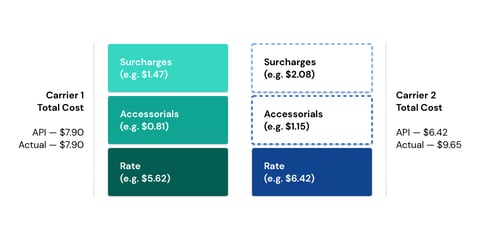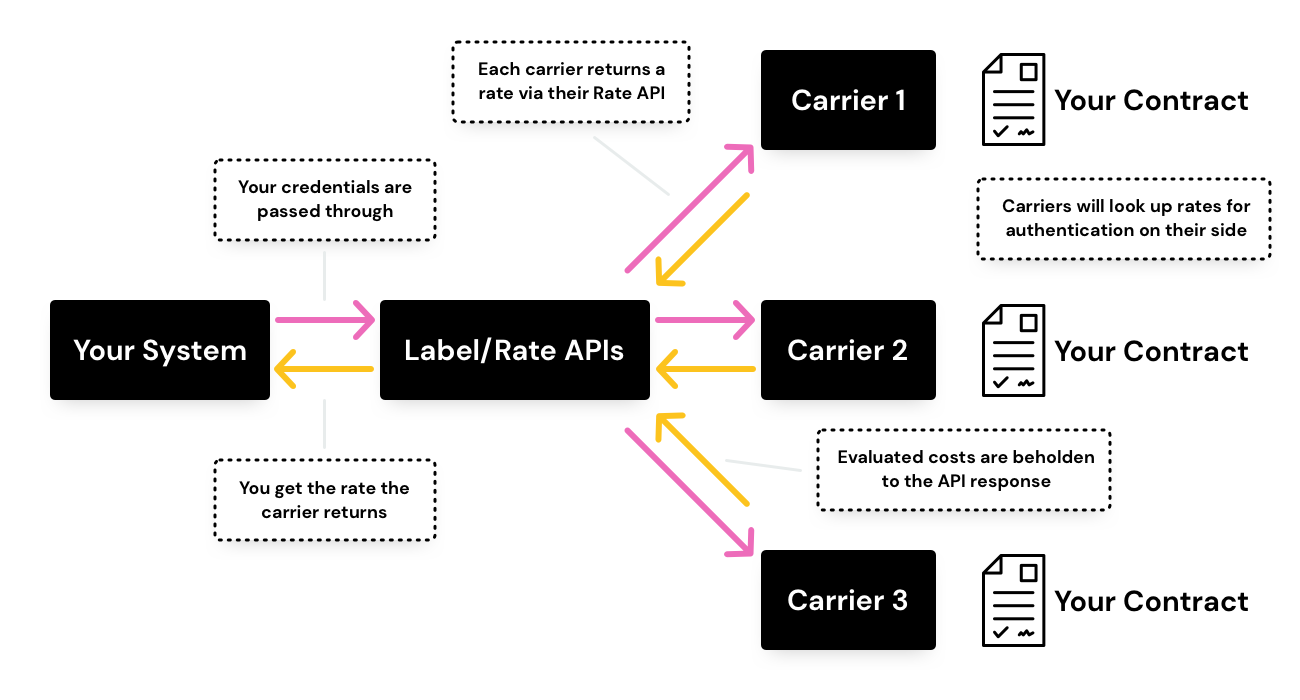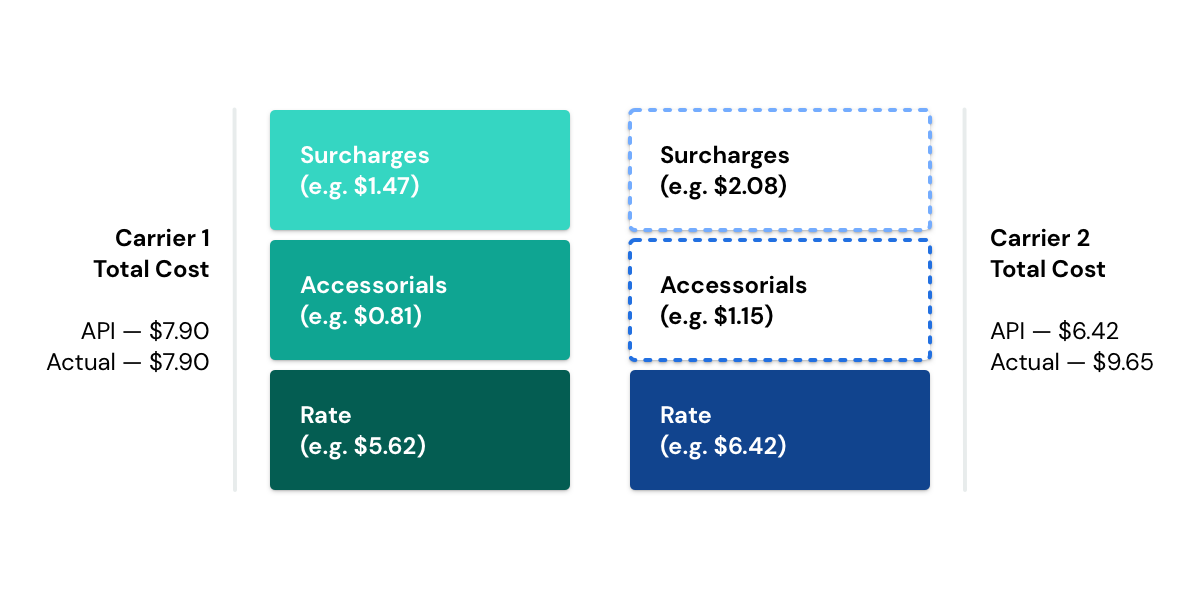How fully loaded rate shopping ensures maximum cost savings

Detailed attention is required for each shipment regardless if you’re a shipper, retailer or 3PL. Total shipping costs is the most important detail, yet, if you built your own rate shopping technology on top of pass-through carrier label APIs, the rates being shopped are likely not the full costs. With higher volumes, millions of dollars are left on the table.
Shipium’s mission is to coordinate the world’s ecommerce infrastructure in order to bring everyone a premium delivery experience, every time. Getting costs right for every shipment is the foundation to fulfilling that mission, so we combined our superior carrier network with our Carrier Selection product to enable fully loaded rate shopping for each of your shipments.
Our all-in-one parcel shipping platform automates all-in rate shopping by virtualizing carrier contracts and managing tedious, ever-changing surcharges. Customers confidently pick the cheapest rate every time.
The hidden unexpected costs of shopping the wrong rates
Shipping costs are a composite of several charges, which can be different carrier-to-carrier. The cost is usually a combination of three things:
- Rates — The negotiated price for that specific permutation of origin<>destination, zone mapping, dimensional weight, or other contractual elements unique to the shipment.
- Accessorial Fees — Small fees add up per shipment. Examples are requiring a signature or having to correct an incorrect address.
- Surcharges — Surcharges are a type of accessorial, but are more predictable. Different carriers have different surcharges, such as variable rates for fuel. There can be many surcharges factored into a specific shipment.
Your contract with a carrier will define your rates and fees.
So here is the question: where do you find all those costs per carrier?
When using shipping platforms that provide APIs for labels or rates with carriers, the answer is the carriers house those values, therefore those API platforms simply pass through your credentials carrier-by-carrier to ask the rates for a given shipment. It looks like this:

When all the rates are gathered from the carriers, businesses then build their own rate shopping logic to pick the cheapest option. It seems like a straight forward problem to solve, but a problem is lurking below.
The key insight is most carriers only respond with rates via their APIs, and typically don’t include accessorial fees or surcharges. In a multi-carrier strategy, this is detrimental to picking the carrier who most deserves your business based on their merit—a mix of cheapest cost and speed or accuracy performance.

The reality is internal solutions are not comparing total costs (apples) against total costs (apples) because the data is incomplete. Instead, they are comparing total costs (apples) to partial costs (oranges), leading to selected carriers sending a bill at the end of the month where included surcharges turned out to be more expensive than what would have been a better option at that time. Shipium’s internal TransOps team ran an analysis of example companies who used a mix of carriers who don’t return fully loaded rates and found that those companies would overpay by 6% on average. At an annual parcel spend of $10 million—fairly basic for the enterprise industry—that’s $600,000 left on the table by not comparing apples to apples within in-house rate shopping logic.
Always compare total shipping costs with Shipium
Solving this problem is a proverbial iceberg. The immediate answer is ensuring all rates being shopped are fully loaded, guaranteeing the smallest number is always the smallest cost.
The trick is all the work required to ensuring costs are fully loaded. To do so requires an enormous amount of work to virtualize carrier contracts, update weekly surcharges, and factor in all network properties as it relates to costs (e.g., setting carrier volume limits per location). The work to setup, coordinate, and manage all of someone’s shipping operations is, in essence, the basis of Shipium.
As businesses begin to mature out of their initial internal efforts on top of shipping APIs, they are turning to the modern approach to shipping management that Carrier Selection offers. If you are someone looking to bring in a partner to help scale your shipping operations, let's connect and start discussing how companies transition to Shipium.

Diagonal thinker who enjoys hard problems of any variety. Currently employee #5 and the first business hire at Shipium, a Seattle startup founded by Amazon and Zulily vets to help ecommerce companies modernize their supply chains. Previously was CMO at Datica where I helped healthcare developers use the cloud. Prior to that I came up through product and engineering roles. In total, 18 years of experience leading marketing, product, sales, design, operations, and engineering initiatives within cloud-based technology companies.


